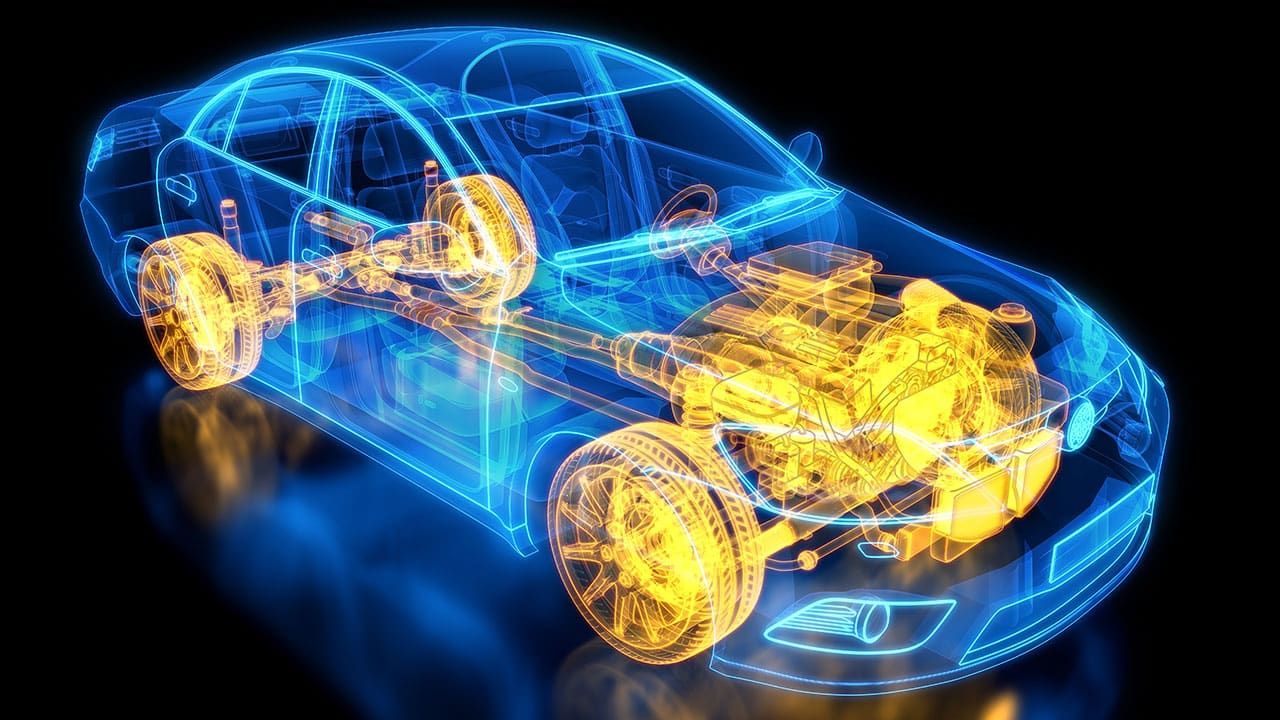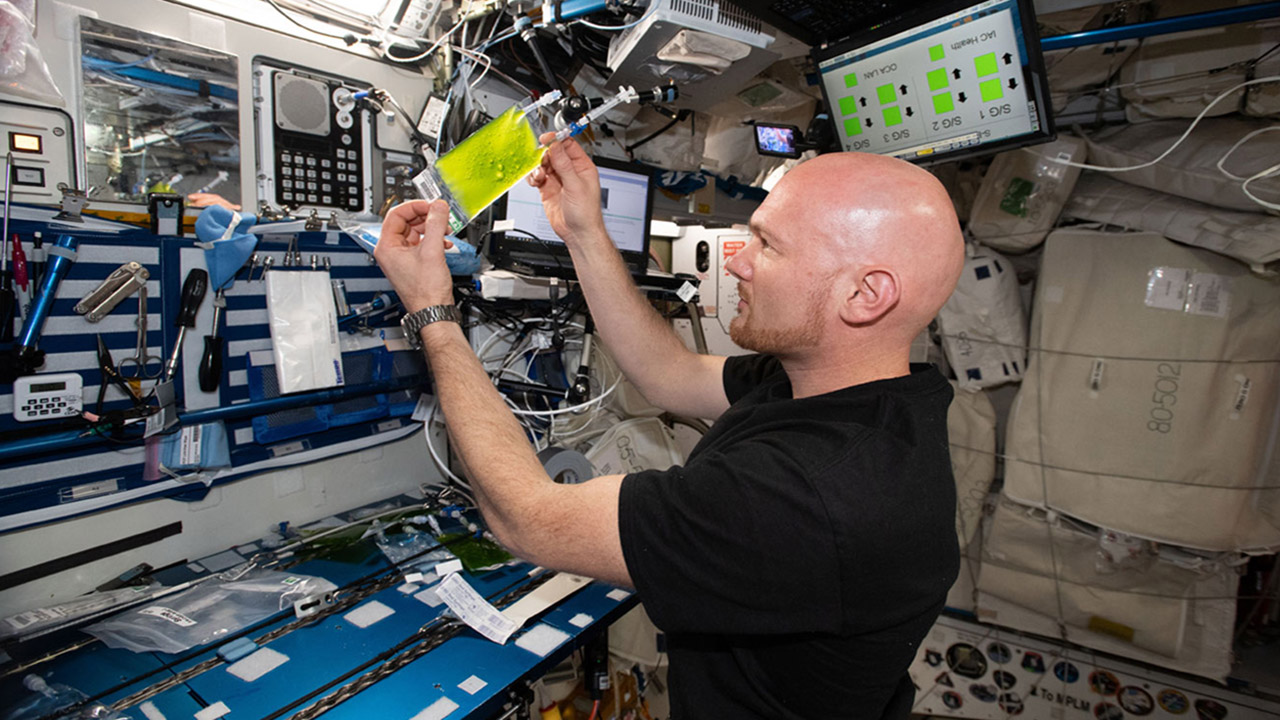Case Study
Improving Internal Combustion Engine Efficiency
MicrogravityThe condition of perceived weightlessness created when an object is in free fall, for example when an object is in orbital motion. Microgravity alters many observable phenomena within the physical and life sciences, allowing scientists to study things in ways not possible on Earth. The International Space Station provides access to a persistent microgravity environment. enables production of a
new type of cool flame
CHALLENGE
On Earth, cool flames are difficult to study because gravity-driven buoyancy quickly snuffs them out.
Cool flames, which burn at temperatures much lower than traditional hot flames, could be key to improving the efficiency of internal combustion engines. However, cool flame chemistry is not well understood. Engine manufacturers need better cool flame models to design engines that incorporate cool flame chemistry. The problem is that cool flames are hard to study on Earth due to buoyancy. Cool flame chemistry moves slowly, and the flames are weak and take some time to establish. But buoyancy moves quickly and extinguishes the flames as soon as they begin to form. To better study cool flame chemistry, the research team needed an environment without buoyancy, and thus without gravity.
Industries:
Automotive, Aviation, Maritime
Strategic Focus Area:
Fundamental Science
Research Area:
Combustion
Institution:
University of Maryland
ISSInternational Space Station NATIONAL LAB SOLUTION AND IMPACTFUL OUTCOME
The team used microgravity to produce cool diffusion flames from liquid fuel for the first time, providing valuable new insights into cool flame chemistry.
In space, where buoyancy is eliminated, cool flames were able to establish themselves fully. Microgravity also allowed the researchers to sustain the flames long enough to study them. By leveraging the ISS National Lab, the team was able to produce a new type of cool flame never seen before. Using data from the investigation, which was published in the journal Proceedings of the Combustion Institute, the team refined models of cool flame chemistry, increasing their accuracy.

INVESTIGATOR
Peter Sunderland
Professor of Fire Protection Engineering, University of Maryland

Peter Sunderland
If we can master this cool flame chemistry, we could theoretically improve internal combustion engine efficiency from 35% to as high as 60%. Many major car companies are now trying to understand cool flames to improve their technology.
– Peter Sunderland, University of Maryland

APPLICATION
Cool flame chemistry could help improve internal combustion engine efficiency and reduce the emission of harmful pollutants.
An engine’s temperature plays a key role in how efficiently it burns fuel. Currently, the internal combustion engines in most cars burn gasoline at an efficiency of 35 percent. This means that only about a third of the energy produced from engine combustion goes toward powering the car—the rest is lost to heat. By incorporating cool flame chemistry into internal combustion engines, manufacturers could theoretically increase engine efficiency to as high as 60 percent. Engine temperature also affects the production of harmful pollutants, and cool flame chemistry could allow engines to run cooler and thus cleaner.
Note: This content is abridged from an article originally published in Upward,
the official magazine of the ISS National Lab.


